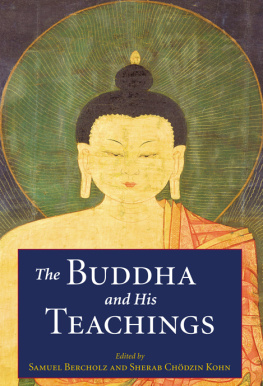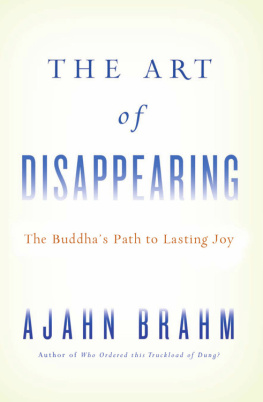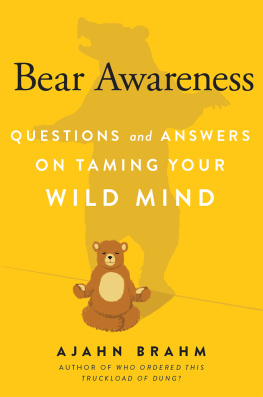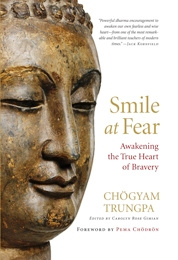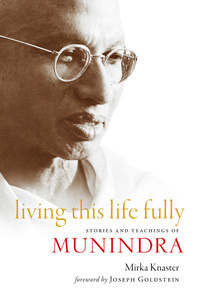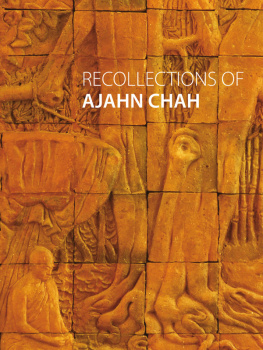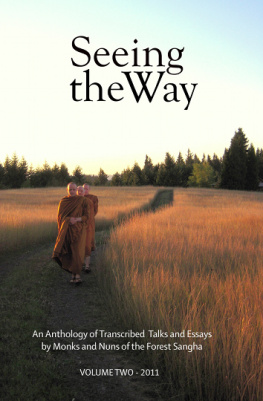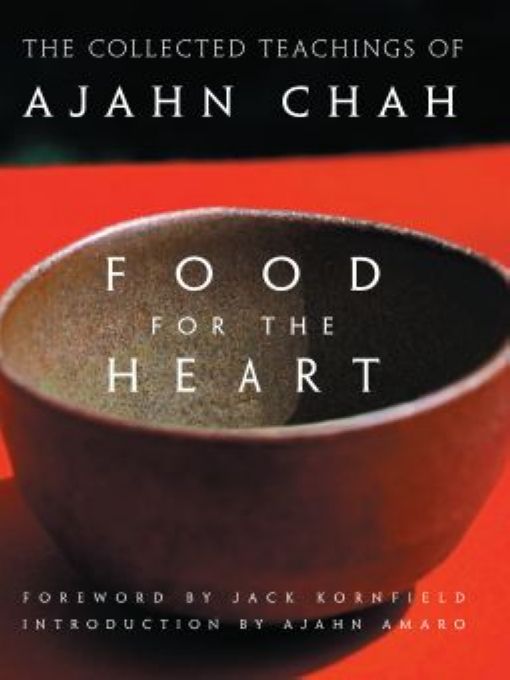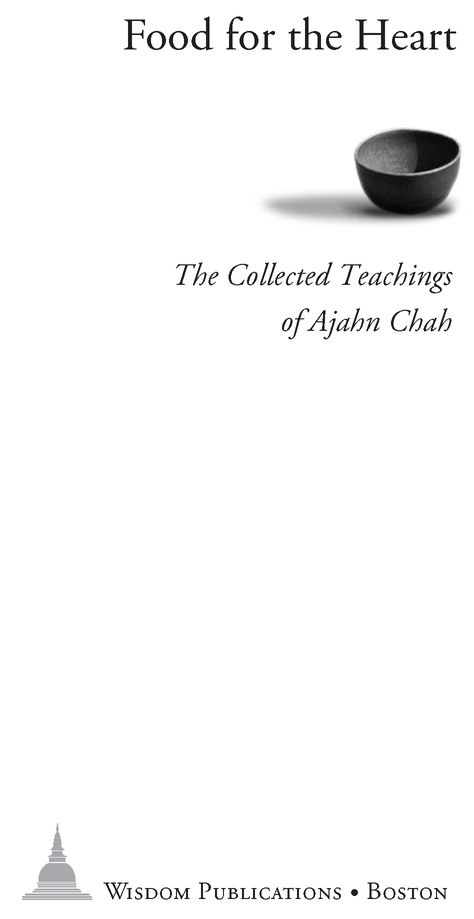Table of Contents
FOREWORD
ITS HARD TO KNOW how to best introduce the wisest man I have ever met. In his presence, there was immediacy and aliveness, simplicity and truth-telling, dignity and intimacy; humor and serious discipline, heart-breaking compassion and spontaneous freedom. Ajahn Amaros beautiful introduction to this book describes him well.
Most of Ajahn Chahs teaching was done in the reality of the moment, by example, by metaphor, by the aliveness of dialogue. His teaching was direct and honest, with no holds barred. Look at the cause of suffering in this human realm, its like this, he would say, pointing our hearts toward the truth. Because he was a consummate performer who taught with a hundred skillful means, because he met each new visitor so directly, adapting his humor and penetrating eye to the circumstances before him, it is hard to wholly capture the vitality of his teaching in words. Fortunately, his legacy also includes nearly two hundred monasteries, many wonderful living and teaching disciples, hundreds of tapes recorded in Thai and some millions of people who have been touched by his wisdom.
On these pages you will find another aspect of Ajahn Chah, the disciplined and somewhat serious side primarily recorded on occasions where he offered longer systematic teachings to groups of monks, nuns, and visitors. In them he invites us all to reflect on the essence of the teachings, to consider them, to take them to heart. In this book he leaps off the page to remind us that, whoever we are, the conditions of life are uncertain: If death is within you, then where are you going to run to escape it? Whether you are afraid or not, you die just the same. There is nowhere to escape death.
From this ground of truth, he points the way that leads endlessly beyond the changing conditions of birth and death to true freedom. This is the important thing: you must contemplate until you reach the point where you let go, where there isnt anything left, beyond good and bad, coming and going, birth and death. Train the heart, rest in the unconditioned, he urges. Liberation is possible.
Those who would follow the teachings of this beloved master must be willing to look into their own heart and mind, to loosen the knots, release the grasping, the fears, the whole false sense of self. If you really understand, no matter what life you live, you can practice the Dhamma every minute of the day. Why not give it a try? Ajahn Chah suggests. It will transform your life!
May the blessings of the compassionate Buddha be carried by Ajahn Chahs words to feed your heart and benefit all beings everywhere.
With great respect,
Jack Kornfield
Spirit Rock Meditation Center
Woodacre, California, 2002
INTRODUCTION
NIGHT IS FALLING SWIFTLY. The forest reverberates with the undulating buzz of countless crickets and the eerie rising wail of tropical cicadas. A few stars poke dimly through the treetops. Amid the gathering darkness there is a pool of warm light, thrown from a pair of kerosene lanterns, illuminating the open area below a hut raised up on stilts. Beneath it, in the glow, a couple of dozen people are gathered around a small, solidly built monk who is seated cross-legged on a wicker bench. The air is filled with a vibrant peace. Venerable Ajahn Chah is teaching.
In some ways, the group that is gathered here is a motley crew: close beside Ajahn Chah (or Luang Por, Venerable Father, as he is affectionately known to his students) are a cluster of bhikkhus (monks) and novices; most of them are Thai or Lao, but there are a few pale-skinned figures among thema Canadian, two Americans, a young Australian, and an English-man. In front of the Ajahn sits a well-groomed, middle-aged couplehe in a stiff suit, and she coiffed and gold-bedeckedhes a member of parliament from a distant province; theyre taking the opportunity while hes in the area on official business to come and pay their respects and make some offerings to the monastery.
A little behind them and to both sides are scattered a sizeable group of local villagers. Their shirts and blouses are worn thin, and the skin on their lean limbs is sun-darkened, wrinkledbaked like the poor earth of the region. A few of those here Luang Por played with as a childcatching frogs and climbing treesothers he helped, and was helped by, in the years before he was a bhikkhu, as they planted out their annual round of rice seedlings and then harvested the fields together at the end of the monsoon. To one side, near the back, is a professor from Freiburg who has come to Thailand with a friend from her local Dhamma (Skt. Dharma) group to study Buddhism; an American nun has come over with her from the womens section of the monastery to guide her through the forest paths and to translate.
Beside them sit three or four other nuns, elder sisters from the nuns section who decided to take the opportunity to come over as well to ask advice from Luang Por about an issue in the womens community and to request that he come over to their side of the forest and give a Dhamma talk to their whole groupits been several days now since he last paid them a visit. Theyve been there for a couple of hours already, so they pay their respects and take their leave, along with the other visitors from the nuns sectionthey need to be back before dark and theyre already a little late.
Near the back, almost at the edge of the pool of light, sits a stern-faced man in his thirties. He is half turned to one side, as if his presence there is uncomfortable, tentative. He is a local tough guya nak leng. Deeply disdainful of all things supposedly religious, he nevertheless has a grudging respect for Luang Por; probably stemming as much from the monks reputation for toughness and his powers of endurance as from the recognition that, as far as religious people go, he might be the real thingbut hes probably the only one worth bowing to in the whole province.
Hes angry and upset, sick at heart. A week ago his beloved younger brotherwho ran with his gang and with whom hed been through a thousand scrapescame down with cerebral malaria and was dead within days. Since then he has felt as if his heart had a spear through it and that everything in the world had lost its flavor. If he had been killed in a knife fight at least I could take revengewhat am I going to do: track down the mosquito that bit him and kill it? Why not go see Luang Por Chah? a friend had said. So here he is.
Luang Por smiles broadly as he makes a point, holding up a glass to illustrate his analogy. He has noticed the stark young figure in the shadows. Soon he has somehow managed to coax him to the front, as if he were reeling in a tough and wily fish; next thing, the tough guy has his head in Luang Pors hands and is weeping like a baby; next, he is somehow laughing at his own arrogance and self-obsessionhe realizes that hes not the first or only person ever to have lost a dear onethe tears of rage and grief have turned to tears of relief.
All of this happens with twenty total strangers around, yet the atmosphere is one of safety and trust. For although those assembled come from all walks of life and from all around the planet, they are all united at this one moment and place as saha-dhammika fellow Dhamma-farers or, to use another expression from the Buddhist vernacular, they are all brothers and sisters in old age, sickness, and death, and thus belong to a single family.





